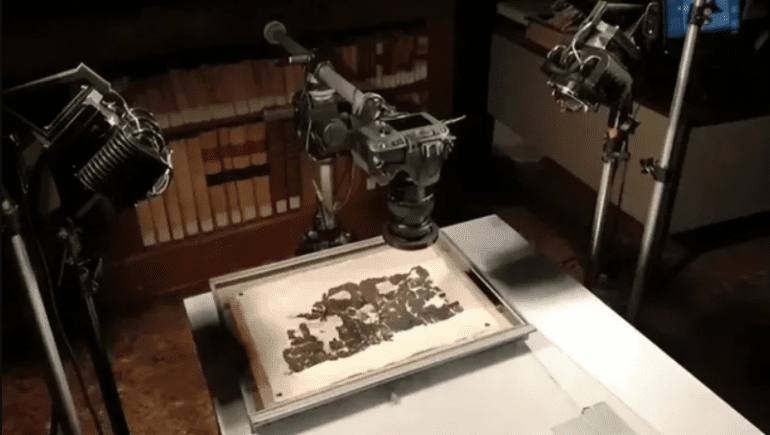- Italian researchers utilize AI to decode an ancient scroll, uncovering Plato’s burial site.
- The scroll, preserved in Herculaneum, sheds light on Plato’s life and legacy.
- Advanced technologies reveal Plato’s interment in a garden within the Academy in Athens.
- Contrary to previous beliefs, Plato’s enslavement likely occurred between 404 and 399 B.C.
- Dialogues within the text offer insights into Plato’s aesthetic judgments and musical preferences.
Main AI News:
In a groundbreaking revelation, Italian researchers have unlocked the long-hidden whereabouts of the famed Greek philosopher Plato, thanks to the decipherment of an ancient scroll. Graziano Ranocchia and his team from the University of Pisa utilized artificial intelligence (AI) to decode text preserved on charred papyrus fragments retrieved in Herculaneum, a town tragically engulfed by the eruption of Mount Vesuvius in A.D. 79. This discovery promises to reshape our understanding of Plato’s final resting place and sheds new light on his life and legacy.
The scroll, containing the writings of Philodemus of Gadara, offers invaluable insights into the history of Plato’s Academy, founded in the fourth century B.C. by the philosopher himself. While historians previously knew of Plato’s burial at the Academy, the precise location remained a mystery. Through a combination of advanced technologies such as infrared and ultraviolet optical imaging, thermal imaging, and tomography, researchers unearthed crucial details concealed within the ancient text.
From the deciphered portions of the scroll, researchers have gleaned remarkable revelations. It is now confirmed that Plato was interred in a garden specifically designated for him within the Academy grounds in Athens, adjacent to the revered Museion or Muses’ sanctuary. This revelation refines our previous understanding, which merely indicated Plato’s burial within the Academy without specifying the exact site.
Moreover, the deciphered text challenges previously held beliefs regarding key events in Plato’s life. Contrary to earlier assumptions, it appears that Plato’s period of enslavement occurred between 404 and 399 B.C., rather than in 387 B.C. Additionally, intriguing dialogues within the text portray Plato’s critical assessment of a barbarian musician’s musical abilities, offering unprecedented insights into his aesthetic preferences.
This groundbreaking achievement builds upon prior successes in utilizing AI to decipher ancient texts preserved by the catastrophic eruption of Mount Vesuvius. By unlocking the secrets concealed within these charred scrolls, researchers continue to unravel the mysteries of antiquity, enriching our understanding of the past and its eminent figures.
Conclusion:
This groundbreaking revelation signifies a significant advancement in our understanding of ancient philosophy and history. The ability to decipher such texts using AI opens up new avenues for research and exploration into the past. It also underscores the growing importance of technological advancements in archaeological and historical studies, potentially leading to new discoveries and interpretations that could impact academic discourse and cultural understanding. As such, there may be increased interest and investment in AI-driven research initiatives within the academic and archaeological communities.

